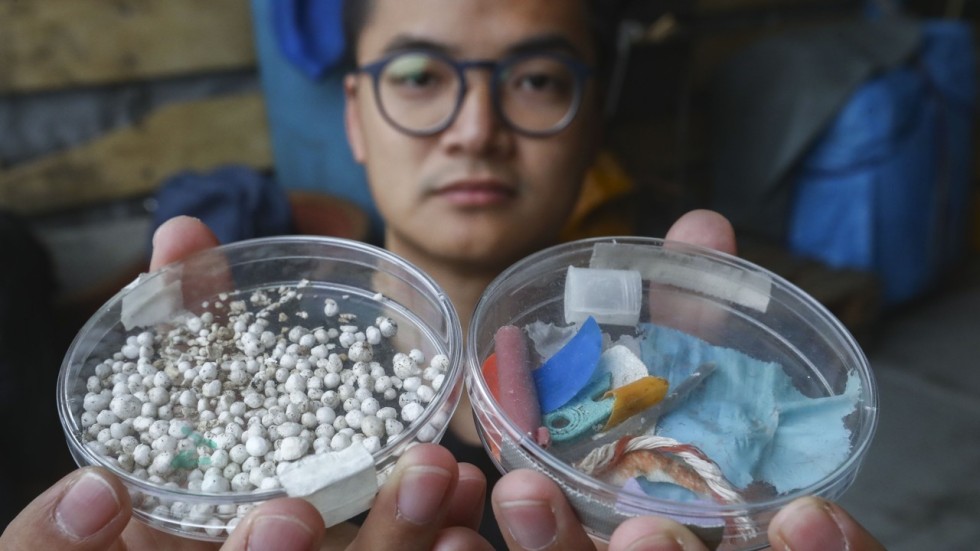
Microplastic levels in the South China Sea were at their highest ever recorded during leg six of the Volvo Ocean Race (VOR) with waters close to Hong Kong also registering alarming numbers.
According to experiments conducted by crew members aboard race boat Turn the Tide on Plastic (TTP), the waters close to Hong Kong showed 75 particles of microplastics per cubic metre. However, that was nothing compared to the 360 per square metre found in the South China Sea in an area closer to the Philippines.
“Microplastic particles are mostly coming from land and are passively distributed by currents that can be very local in extent,” said scientist Toste Tanhua who tested the samples taken by TTP sailor Liz Wardley at the Geomar Institute of Ocean Research in Kiel, Germany.
Skipper @deecaffari in her Olas leggings made from recycled plastic Great for any adventure! Thanks Olas for being an #OceanHero with us. Check them out here: https://t.co/UUGv2IoWMB pic.twitter.com/JvGi6bW0im
— TurnTheTideOnPlastic (@TurnTidePlastic) May 10, 2018
“Since the race yachts are not continuously sampling for microplastics it can easily be that concentrations are very different for locations close to each other in areas of strong currents.
“The leg six data indicate high concentrations of microplastics close to the Asian continent, not unexpected considering the use of single-use plastics in this region.”
Hong Kong’s Environment Protection Department had yet respond to an inquiry about the results of the VOR study.
Leg six of the race was between Hong Kong and Auckland, New Zealand, where tests showed 60 particles per cubic metre. The previous highest levels of 307 were discovered in the area where the Mediterranean Sea and Atlantic Ocean meet, said VOR organisers.
“The leg 6 data indicate high concentrations of microplastics close to the Asian continent, not unexpected considering the use of single-use plastics in this region.”
The information comes from the Volvo Ocean Race Science Programme, which has brought together an elite scientific consortium to capture data that will contribute to a better understanding of the world’s ocean and climate.
The US National Oceanic and Atmospheric Administration defines microplastics as particles less than 5mm in diameter, though there is contention among scientists on size.

They can take thousands of years to degrade and by collecting information on their levels, the mission is helping scientists gain insight into the scale of plastic pollution and its impact upon marine life.
The crews, meanwhile, are preparing for leg nine of the race from Newport in the United States to Cardiff in Wales. The 3,300 nautical mile journey across the Atlantic Ocean starts on May 20 with Spanish team Mapfre in the overall lead after their dramatic victory in leg eight from Itajai in Brazil.
Hong Kong-owned Sun Hung Kai/Scallywag is sixth overall out of seven boats, having won leg four from Melbourne to Hong Kong and then finishing second in leg six from Hong Kong to Auckland, New Zealand.
China’s Dongfeng Race Team is second on 50 points, three behind Mapfre, with Team Brunel (42 points) third. They are followed by Team AkzoNobel (36), Vestas 11th Hour Racing (28), Scallywag (27) and Turn the Tide on Plastic (22).







